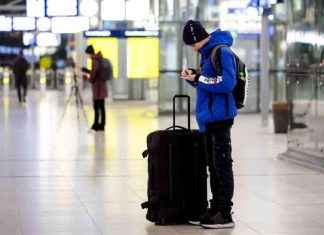Air travel is booming again due to increased demand and availability of vaccines. There has also been a lull in the number of virus cases since last summer’s large wave. According to the Transportation Security Administration, passenger checkpoints are almost as busy as they were before the pandemic.
While airlines have increased their capacity to meet the demand, the industry is still struggling with a slow workforce recovery. They are struggling to hire additional staff, particularly air crews. This has raised concerns that major airlines may be facing a difficult December.
Third Bridge analyst Peter McNally said, “They are competing for people, like a lot of other industries.” “They know what to do. It’s just a matter going out and doing it.” Thousands of workers were forced to leave major airlines last year after air travel collapsed due to the pandemic. As a condition for federal pandemic relief, they were forbidden from laying off employees. These workers have not returned in a timely manner, which has left the workforce stretched. Many times, flight crews have reached their maximum hours and are forced to cancel flights due to a shortage of cabin crew. American Airlines was faced with this situation in October, when it had more than 1000 flights cancelled because it was short-staffed. Southwest Airlines was also cited for its October flight cancellations. Although both airlines blamed weather issues, analysts say that actual weather and air traffic problems have only made staffing shortages more severe. McNally stated that one of the biggest problems airlines have faced so far was their inability to cover the unpredictable nature of bookings. McNally stated that people are booking travel faster and have less time between booking and departure, which makes it more difficult to staff.
American Airlines’ labor unions have warned for months about the fact that the airline was scheduling too many flights than it could handle.
“These cases demonstrated how quickly weather and staff shortages can impact airlines as they seek to maximize fall revenue within exceedingly narrow operational margins,” Cirium, a data provider for the airline industry, said in a recent report. United, Delta and American spent the first half 2021 slowly recovering from the worst effects of the pandemic. The available seat miles, which is a key indicator of passenger capacity, saw slight improvements at each airline. This measure was almost back to pre-pandemic levels in the third quarter.
Some airlines may have found the push to increase passenger capacity too overwhelming. According to Labor Department data, employment for air travel has fallen more than 9% since peak levels before the pandemic that decimated the industry was declared. To ensure full revenue recovery, staffing levels will need to continue to grow.







